

The existence of Mafiosi in western New York became apparent with the April 1903 discovery of a murdered Buffalo man within a barrel on a New York City sidewalk. Authorities learned that victim Benedetto Madonia, resident of Buffalo, had been involved with a counterfeiting ring run by Manhattan-based Mafia boss of bosses Giuseppe Morello. At the peak of its strength, the reach of The Arm - as the Mafia of western New York became known - extended into Ontario, Canada, the Erie region of Pennsylvania and across New York State to the Binghamton area.
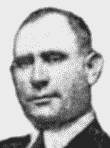
1907 - Giuseppe DiCarlo (Born Vallelunga, Sicily, Oct. 18, 1873. Died Bowmansville, NY, July 9, 1922). DiCarlo's documented presence in western New York dates from March 1907. A New York City resident until then, DiCarlo was noted crossing the U.S.-Canada border at Niagara Falls. DiCarlo and his family relocated from New York City to Buffalo the following year. There are solid reasons for believing that DiCarlo was an associate of Manhattan-based Mafia boss of bosses Giuseppe Morello before this move. As DiCarlo, who had family roots in the Vallelunga-Valledolmo area of Sicily, organized rackets in the Buffalo area, he cooperated closely with a growing faction of Mafiosi from the Castellammare del Golfo region of Sicily.
1911 - Bendetto Angelo "Buffalo Bill" Palmeri, originally of Castellammare del Golfo, moved from New York City to Buffalo and became an important lieutenant in the DiCarlo regime. Two years later, Palmeri married into the DiCarlo family and moved into the DiCarlo household. In 1917, Palmeri moved his family to Niagara Falls.
1920 - As a gateway between Canada and the United States, Buffalo was a key city for the early U.S. Mafia. It became even more important as a conduit for alcoholic beverages during Prohibition. (A Calabrian smuggling network was already in place - due to earlier Canadian Prohibition measures - and was fully prepared to exploit U.S. restrictions on the alcohol trade.) In this period, the Buffalo region was closely linked to Cleveland (where there also existed a sizeable population of Vallelunghesi). As the U.S. Prohibition Era opened, Castellammarese Mafioso Filippo Mazzara arrived in Buffalo. The following year, he was joined by his relative Giuseppe DiBenedetto.
DiCarlo: Buffalo's First Family of Crime, Vol. I
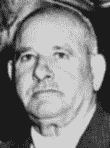
Magaddino
1922 - Stefano Magaddino (Born Castellammare del Golfo, Sicily, Oct. 10, 1891. Died Lewiston, NY, July 19, 1974). At the time of Giuseppe DiCarlo's death, the Castellammarese Mafia faction in western New York was substantial and included a number of influential figures. Magaddino, recognized as a leader of the Castellammarese mafiosi in America, was called upon to relocate to the Buffalo area and become the regional Mafia boss. Magaddino, well known in Brooklyn, Philadelphia and Chicago, had traveled through the western New York region previously and had a warm relationship with former boss DiCarlo. At first reluctant to accept the underworld post, Magaddino eventually was convinced. He purchased property in Niagara Falls and began construction on a home. Great Prohibition Era profits made the Buffalo Crime Family one of the more important Mafia organizations on the continent.
1930 - Magaddino sent money and men to aid Salvatore Maranzano in his New York City war against boss of bosses Giuseppe Masseria in 1930-31. Following the war, as Maranzano had himself installed as the new boss of bosses and demanded tribute payments from crime families across the country, Magaddino's feelings toward Maranzano soured.
1932 - As the Mafia reorganized following the assassination of Maranzano, Magaddino was appointed as one of just seven U.S. Mafia bosses on the new conflict-resolving Commission. It appears likely that he took the place of Cleveland boss Frank Milano, after Milano was disgraced by his apparent approval of the murders of several Pittsburgh underworld leaders.
1957 - The disastrous Mafia conference at the Joseph Barbara estate in Apalachin, New York, was planned by Barbara's underworld superior Magaddino. The appearance of law enforcement agents at the site resulted in numerous Mafiosi from around the country being identified and detained. Magaddino was not among those physically detained, but his brother, son-in-law and underboss were gathered and questioned by police.
1964 - John Montana, Magaddino underboss with great influence in the Buffalo area, died. In the same year, the relationship between the Magaddino Family and the long allied Bonanno Crime Family of Brooklyn broke down.
1967 - Magaddino's top men overseeing Buffalo operations were removed through criminal convictions. Pleading poverty, Magaddino made increased financial demands of his underlings. The following year, a vast cash fortune was discovered by law enforcement hidden in the home of Magaddino's son, causing the boss to lose his credibility.
Buffalomob.com: Stefano Magaddino biography
DiCarlo: Buffalo's First Family of Crime, Vols. I and II
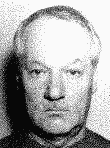
Pieri
1969 - Salvatore Pieri (Born Buffalo, NY, Jan. 29, 1911. Died Buffalo, NY, Aug. 24, 1981). Believing the aging Niagara Falls-based Magaddino was taking an unfair share of their profits while providing little to the organization, lieutenants in the city of Buffalo pulled away from Magaddino's leadership. Pieri, brother-in-law and longtime ally of Joseph DiCarlo (son of the late crime boss Giuseppe DiCarlo), was selected as acting boss of the breakaway faction. Joseph Fino was selected as acting underboss. Joseph DiCarlo served as acting consigliere. Much of Stefano Magaddino's organization defected to the Pieri camp.
1974 - During Pieri's imprisonment in the early 1970s, his leadership of the breakaway Buffalo faction was challenged by John Cammilleri. Cammilleri was murdered on May 8, 1974. On July 19, 1974, Magaddino died of natural causes at the age of 82.
1980-1981 - Pieri's hold on the Buffalo underworld was weakened considerably with the death of Joseph DiCarlo in October 1980. The Buffalo crime family fragmented after Pieri's death the following year.
Buffalomob.com: Salvatore Pieri biography
DiCarlo: Buffalo's First Family of Crime, Vol. II
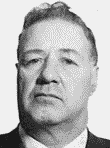
Frangiamore
1981 - Salvatore "Sam" Frangiamore (Born Mussomeli, Caltanissetta, Sicily, Aug. 7, 1905. Died Angola, NY, Nov. 28, 1999). Frangiamore had worked closely with Joseph Fino on regional gambling rackets. He served time in prison for gambling, but returned to the rackets after his parole. He became a leader of a Frangiamore-Todaro faction within the Buffalo Crime Family. During Sam Pieri imprisonments, Frangiamore served as acting boss of the organization. Some believe Frangiamore briefly held command as full boss of the Buffalo Mafia Family after the summer 1981 death of Sam Pieri, as the old Pieri-DiCarlo faction diminished in importance and a new Todaro-based regime was installed.
Buffalomob.com: Salvatore Frangiamore biography
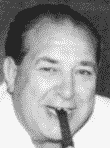
Todaro
1984 - Joseph "Lead Pipe Joe" Todaro, Sr., (Born Buffalo, NY, Sept. 18, 1923. Died Tonawanda, NY, Dec. 26, 2012). The nephew of Sam Frangiamore, Joseph Todaro Sr. is believed to have taken control of crime family operations in the Buffalo area following Frangiamore's retirement in 1984. Todaro was well known in the Buffalo area as the proprietor of the popular LaNova Pizzeria. Authorities suspected Todaro of involvement in the 1965 murder of Tonawanda, NY, real estate salesman Charles Gerass. Gerass was found strangled to death inside an automobile trunk. Informants told the FBI that an underworld party held at Panaro's Lounge in Buffalo in 1967 was a celebration of Todaro's induction into the regional Mafia and that Todaro was welcomed into the Arm as a reward for the Gerass hit. Authorities raided the party and found thirty-seven underworld figures there. Todaro subsequently brought a harassment lawsuit against Buffalo police and Buffalo FBI Special Agent in Charge Neil J. Welch.